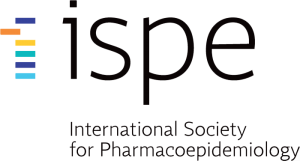Databases in Asia: The Potential for Distributed Network Approach
*Note: If you are interested and would like to participate in this study, you can click following link: https://duke.qualtrics.com/SE/?SID=SV_a8A9e8o4iASh8pf to start the survey
Background:
Pharmacoepidemiology in Asia
Pharmacoepidemiology (PE) studies provide evidence on beneficial and adverse effects of medical products in real world populations and practice settings. The contributions of PE to understanding the benefit and risk of medicinal products have played the key role in public health in recent decades and have impacted regulatory affairs in Western countries. However, it is evident that the drug effects, both therapeutic and adverse, and their implications might be different among ethnic groups due to polymorphism of receptors and cytochromes and/or different practice patterns and health care policy. Therefore, the lack of own evidence would pose great challenges to understand medication safety and effectiveness among Asian countries. To facilitate the prompt identification and validation of emerging safety issues among the Asian countries, the Asian pharmacoepidemiology Network (AsPEN) was formed to provide a mechanism to support the conduct of pharmacoepidemiological research in Asian populations.
Multi-national study and distributed network approach
Multiple collaborative research networks and multinational study systems exist in the US and Europe, including the US FDA mini-sentinel, European Network of Centres for Pharmacoepidemiology and Pharmacovigilance (ENCePP), and the Task-force in Europe for Drug Development for the Young (TEDDY) Network of Excellence. Multinational database studies have numerous advantages; a large sample size, more generalizable population, Asian Pharmacoepidemiology Network AsPEN Asian Pharmacoepidemiology Network (AsPEN) is a Special Interest Group (SIG) of the International Society for Pharmacoepidemiology (ISPE) and the collaboration between countries could also create future partnerships benefiting the communication and public health. The distributed network approach are widely used in the collaborative networks, basing on the concept that the data partners maintain operational and physical control over their data, but transform and then store the data in the common format. By using a systematic program, this approach allows controlling quality analyses in minimum information to share on patient health data, and allows analysts who are knowledgeable about the participating health systems to ensure their data are analyzed and interpreted properly. Therefore, AsPEN will be also most efficiently operated using this approach. One of the initial steps to establish a similar distributed network is to understand the applicability of a common data model (CDM) to heterogeneous data sources.
Sources in Asian countries and the feasibility to build up a common data model
The availability of claims database and electronic health records from Asian countries has been introduced (Pharmacoepidemiology and Drug Safety 2013; 22: 700–704). Many of detail information among large database from Japan, Taiwan, and Korea has been described (Pharmacoepidemiology and Drug Safety 2011; 20: 1237–1245). However, the capacity of database in Asian countries and the feasibility to build up a common data model has not been well described.
Objective:
1.
To describe database availability and characteristics of the databases in Asian countries, including AsPEN countries and non-AsPEN countries. To assess the capacity and feasibility to build a common data model in Asian database environments. 1. Web-based questionnaire survey: Qualtrics survey software A total of 10 data sources from Asian countries participated in the survey, including nationwide databases form Japan, Korea, Taiwan, and Hong Kong. These contained data on approximately 128, 50, 23, and 7 million individuals, respectively, covering all age groups and the majority was Asian. One claims database includes all veterans and dependents (approximately 330,000 individuals) from Australia with predominantly elderly and Caucasian. Others included a hospital based EHR was from western China (approximately 5 million individuals) and two EHRs were from Thailand (approximately 1 million and 300,000 individuals). Two registries for cancer and stroke were from Taiwan. The majority of databases possesses the information on diagnoses with the date by either ICD9 or ICD10 codes; and encompasses procedures and prescriptions records with the date by domestic coding systems. Information on laboratory test orders is available in most databases and Japanese commercial claims database, Hong Kong’s database, EHRs and registries contain the values. Four databases have information on medical expenditures by the currency of their countries. Three databases (Taiwan, Japan, and China) contain longitudinal dispensing data for TCMs. One EHR of Thailand includes information of Thai herbal medicine. Dr Soko Setoguchi (soko.setoguchi@duke.edu), and
2.
Method:
2. Questionnaire:
1) Nature of database (e.g., database starting and ending year; number of
population; age of cover)
2) Data size
3) Policy/restriction of using database
4) Costs for purchasing/accessing database
5) Ethical issue of using database
6) Data information:
a. Patient demographics information
b. Hospital (Health care facility) information
c. Physician and other health care provide information
d. Diagnosis information
e. Drug information (including Traditional Chinese medicine (TCM) or alternative and complementary medicines)
f. Procedure information
g. Laboratory data
h. Medical expenditure informationPreliminary findings:
Contact:
Edward Chia-Cheng Lai (chia-cheng.lai@duke.edu ), Duke Clinical Research Institute.

